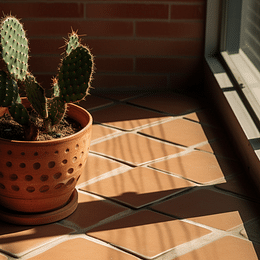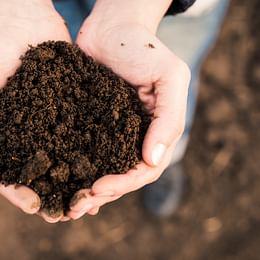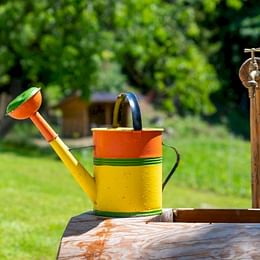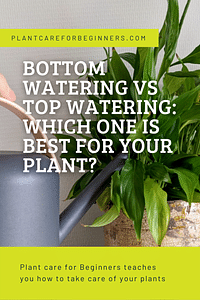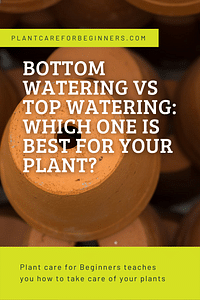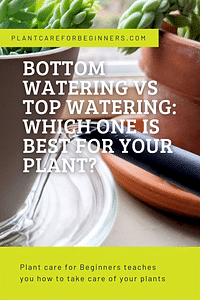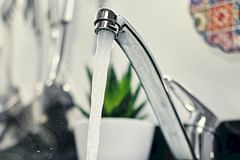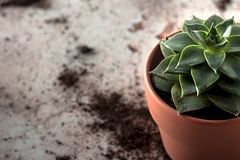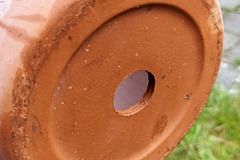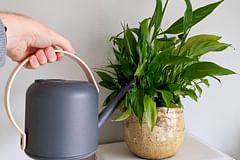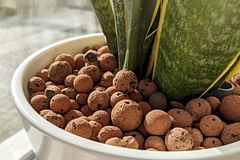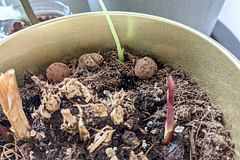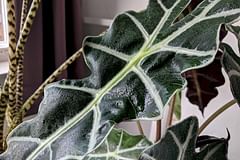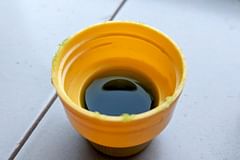Bottom Watering vs Top Watering: Which one is best for your plant?
Bottom watering is getting more attention lately, but do you really know what it means? Is it good for your plant? In this plant care guide, we're going to look at one of the most essential part of taking care of plants: Watering your plants.
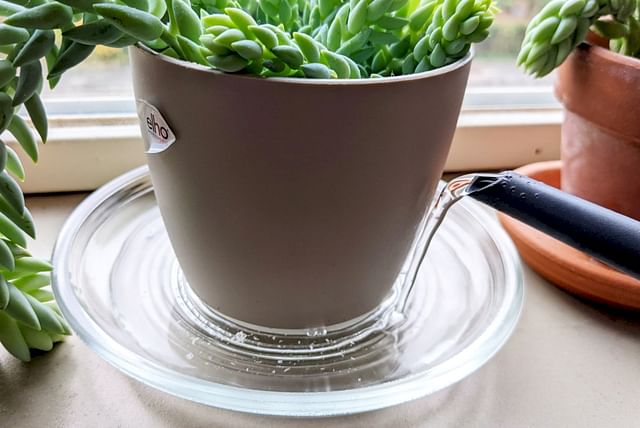
Watering is an essential part of taking care of your plant. If you water your plant perfectly, not too much or too little, you'll have a happy and healthy plant.
If you've read plant care guides before, you might have heard about top watering versus bottom watering.
What do these terms mean? Why should you do one of them over the other? Which one is best for your plants?
I'll answer all of these great questions in this plant care guide, so you can decide for yourself what's best for you and your plant!
These are the topics we're going to look at in this plant care guide:
- What is the difference between top and bottom watering
- The advantages of bottom watering
- The disadvantages of bottom watering
- How often should you water your plant?
- Watering for the different seasons
- Water temperature
- The best post for bottom watering
- Best plants for bottom watering
- Best plants for top watering
- Conclusion
Let's get started and learn the difference between top watering and bottom watering!
What is the difference between top and bottom watering
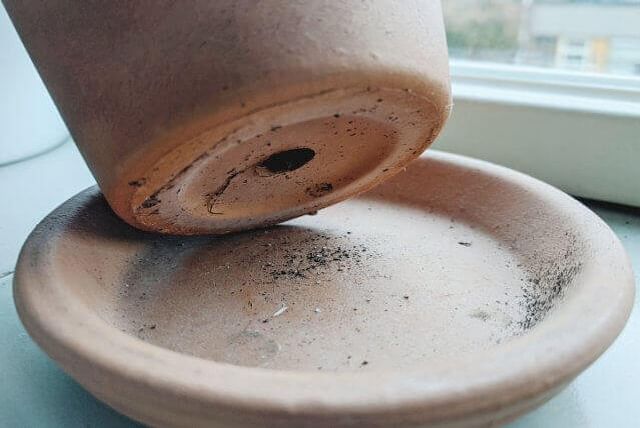
The difference between top watering and bottom watering is this: top watering is when you water your plant from the top of the soil and bottom watering is when you water your plant from the bottom of the pot.
Top watering is the most common way to water your plant, so it's very likely you've been watering your plants like this.
You're top watering your plant when you use a watering can and sprinkle water on top of the soil and letting it sink down into the soil.
Bottom watering works a little differently. When you're bottom watering, you use a bucket or saucer, something to hold the water without making a mess.
You fill the bottom of the bucket or saucer with water and put your plant's pot in the water.
Bottom watering is only effective if your pot has a drainage hole, as this allows water to reach the soil. When you place the pot in a saucer or bucket of water, the soil gradually absorbs the moisture. Typically, it can soak up as much water as it can hold in about 5 to 10 minutes. Once the soil has had its fill, you can remove the pot from the water and let any excess drip out!
But what are the advantages of bottom watering over top watering?
The advantages of bottom watering
If you're watering your plants from the bottom, you have a few advantages over watering your plants from the top.
The soil does all the work
Bottom watering is a great way to water your plant without leaving any excess water sitting at the bottom of the pot. When you're watering your plant from the bottom, and you're never letting it sit in the water for more than 5 to 10 minutes, it helps you avoid overwatering your plant.
As an added bonus, if you let the soil drip for another 5 minutes after you take it out of the water, you're know that the soil has the right amount of moisture.
Fight pests
Another advantage of bottom-watering your plant, is that the top of the soil never gets moist. This dry layer of soil on top helps you to keep insects, fungi, and other pests away from your plant. These pests are all attracted to moisture and thrive in an environment that's humid.
When you water your plant from the bottom, you make the environment less inviting for those pests.
It's easier
One of the biggest things, about watering your plants with the bottom-watering method, for me is that it's easier to water your plant properly. Now what does "properly" mean?
If the soil of your plant is very dry, it's not very good at absorbing water any more. The water will just run down the side of the soil towards the bottom of the pot. This means you're watering your plant, but your plant isn't getting any of the moisture you're giving it.
By bottom-watering, you let the soil slowly absorb the moisture. It has no choice but to absorb the moisture, because it's (partially) submerged. So when you bottom water your plant, you know it's getting the moisture it needs.
Are there any disadvantages when you're bottom watering your plant? Let's find out in the next section!
The disadvantages of bottom watering
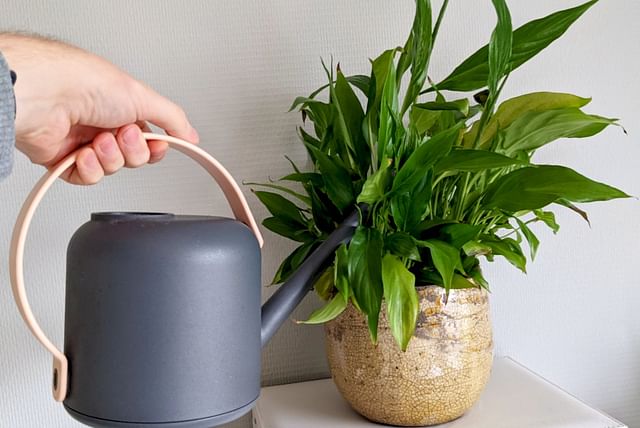
Like most things, bottom watering has advantages, but also disadvantages. Let's find out what the biggest downsides of bottom watering your plants are.
Salts stay behind
First of all, one of the biggest downsides of bottom watering is that you can never drain any salts from your soil properly.
When you're watering your plant from the top, you're not just watering your plant, but you're also draining leftover salts from fertilizer to the bottom of the pot.
If you have a pot with a drainage hole, which I recommend, you're both watering and cleaning the growing environment of your plant by using water.
Unfortunately, when you're bottom watering your plant all the time, you'll never really get rid of these salts. That's why it's a great idea to combine top watering and bottom watering for your plants. By combining the two ways of watering, you make sure that your plant is watered properly, but you're also cleaning its growing environment.
Less control
The second downside of bottom watering your plant is that the soil will absorb all the moisture it can hold.
This is perfect if you're using the right soil for your plant, you can read more about the perfect soil.
However, if you're growing a cactus in soil that's not designed for cacti, you will overwater your plant. You have a lot more control over the amount of moisture that you give your plant when you water from the top of the soil.
How often should you water your plant?
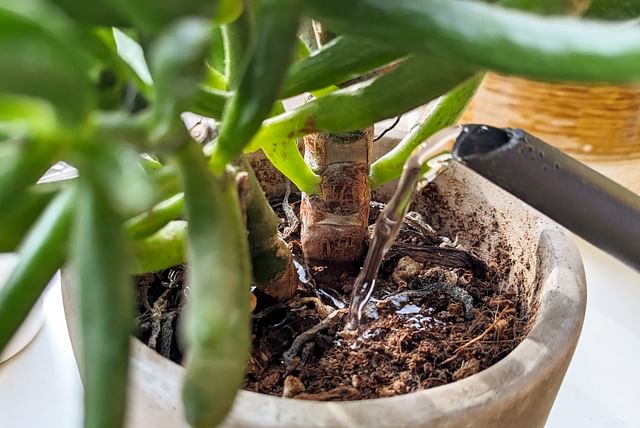
Deciding how often you should water your plants is one of the trickiest parts of plant care. There is no right answer, because it depends on the type of plant and the environment it's growing in. Things like light, temperature, humidity, and potting medium all play a big role in how often you need to water your plants.
Whether you choose to go with bottom or top watering, you will need to know how often you should water your specific plant to keep them healthy and happy.
For most houseplants, a good guideline is to water every 1-2 weeks. Plants that thrive in well-draining soil, like succulents and cacti, like to dry out completely between waterings, so you should water them less often. Once every 2-3 weeks during the growing season is great for them. You can both top- and bottom water succulents and cacti.
Plants that love consistently moist soil, such as peace lilies or pothos, do well if you water them once every week, especially in warm or humid conditions. You can also water these plants by using both the top and bottom watering methods.
But, the best way to find out if your plant needs water is to check the soil using a soil moisture meter or your finger. If the soil is still moist, wait a few more days and check again.
Signs of overwatering or underwatering
Even with the best techniques and watering schedules, you can still make mistakes. Even the most experienced plant owners still make watering mistakes, so don't feel too bad if it happens to you.
When you've accidentally watered your plant too much or too little, your plant will tell you. That's why it's important to learn to understand what your plants are telling you, so you can make changes to your plant care routine and help it recover.
If you've accidentally **overwatered** your plant, you might see signs like yellowing leaves, which can appear soft and mushy. If you notice your plant's leaves drooping despite the soil being wet, there is a big chance that the roots may be suffering from root rot. If your plant's lower leaves are wilting or falling off, it might be a sign that water is accumulating and suffocating the roots, leading to poor oxygen flow. If you're looking for quick steps to take to help your plant, have a look at How to rescue a plant from overwatering.
You can also forget to water your plant for a little too long and your plant could become underwatered. If this happens, your plant will start to show dry, crispy leaves, especially at the tips, which may develop a brown appearance. A plant that is thirsty will often show signs of wilting, where the leaves droop and lose their plumpness. If you notice the soil pulling away from the edges of the pot or if it's completely dry several inches down, it's time to water.
Remember, if the soil becomes this dry, top watering won't be very effective any more, so I highly recommend you use the bottom watering technique to water your plant in this condition.
Watering for the different seasons
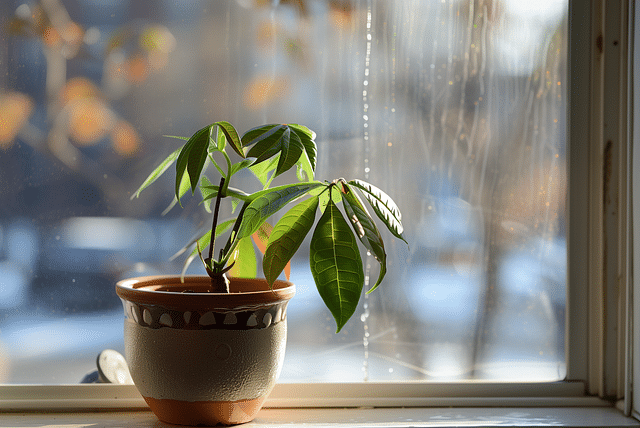
Earlier, I mentioned that how often you should water your plant depends on its growing environment. Seasons actually play quite a big role in this too. Even houseplants, that grow in your warm and comfortable house, deal with the seasonal changes that are happening outside.
So it might come as a surprise that you should also water your plant different during the different seasons. Let's see what the differences are and how to relates to top and bottom watering.
Spring
In the spring, your plants wake up from their winter dormancy and enter a period of active growth. During this growing season, your plants often need more water. The temperatures are becoming higher and the sun is out for longer than the winter, so the soil dries out faster.
Because the soil dries out faster, you might have to water your plants a little more often. It's a good idea to check the soil once per week to see if they need more moisture.
During the active growing season, I recommend you use the bottom watering technique a little more often, because this helps the roots of your plant to really absorb all the moisture it can. This will help to support healthy growth for your plant.
Summer
In the summer, when the temperatures become even higher and you're dealing with high humidity (if you don't use AC), your plants will grow even quicker than in the spring. Summer is usually the peak watering season.
Plants that prefer moist conditions, like peace lilies and ferns, will need consistently moist soil, so you should water it more often. Possibly every few days (check the soil before you water). Desert plants like succulents and cacti can stick to their less frequent watering schedule, often every couple of weeks.
During this time of quick growth, bottom-watering is a great way to water your plants. Yes, even those desert plants.
Fall
In fall, the temperatures begin to drop and many plants slow their growth. This also means you won't have to water them as often. Some plants may only need water every 2-3 weeks. Be especially careful with plants transitioning into dormancy, as overwatering at this time can lead to root rot. The colder temperatures make it so moisture evaporates more slowly.
During fall, I recommend you don't bottom water your drought-loving plants like cacti and succulents. These plants store a lot of moisture in their leaves and can go for weeks without water. You can still bottom water some of the moisture-loving plants like ferns, but it's not a bad idea to stick to top-watering during this time of year.
Winter
Winter is a time when many houseplants aren't growing, so you should water your plants even less. With lower temperatures and reduced light levels, the soil holds onto moisture for longer periods. You may find that watering every 2-4 weeks is enough for most plants during this season. Always check the soil's moisture before watering, as too much water can lead to stress or damage the roots.
Strictly stick to top-watering during this time of year. It's very important that the top of the soil becomes moist, so you can easily check if your plants need water again. Bottom watering is not needed during winter, as your plants don't really need the extra moisture.
Water temperature
Now something you might not have thought about when it comes to watering your plants: the temperature of the water. It might seem a little strange, but the temperature of the water can make a big impact on plants with sensitive roots.
Boiling and freezing (as in melted ice) aren't a great idea, because this is a big shock to your plant. Just like us, plants can be sensitive to extremes in temperature, and using water that is too hot or too cold can stress them.
For most houseplants, using room temperature water, around 20 to 22 degrees Celsius (68 to 72 F), is great. This temperature allows water to be absorbed more easily by the roots without shocking the plant.
Using both the top and bottom watering method, I recommend to use room temperature water to reduce the chance of any stress. If you don't have room temperature water, because you can't wait to let it sit for a while, it's best to stick to top-watering. The soil will help to stabilize the water temperature before it reaches the sensitive root system.
The best post for bottom watering
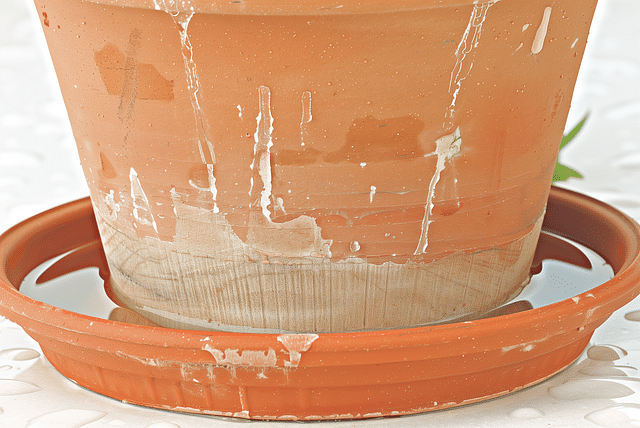
Bottom watering only has 1 requirement when it comes to choosing a good pot: it must have one or more drainage holes. The drainage hole lets in moisture when watering your plant and it also helps excess moisture escape after you've let the plant soak for a few minutes.
Besides the drainage holes, the different pot materials also have different benefits that might make it easier for you to water your plant. Let's look at what these different materials can do for you and your plant.
Terracotta
Terracotta pots are made from unglazed clay, which allows for excellent breathability and evaporation. This characteristic makes them ideal for plants that like the drier conditions, because excess moisture can escape more easily. Terracotta pots work really well with **top watering**, as they allow water to be distributed evenly throughout the soil while promoting drainage.
However, because terracotta can dry out quickly, plants that prefer moist soil, such as ferns and peace lilies, may struggle in these pots if you don't water them enough. For bottom watering, terracotta can also be a good choice, as the porous nature of the material can help to evaporate moisture quite quickly. This is great for succulents and cacti, but not very good for moisture-loving plants.
Ceramic
Ceramic pots can come in all kinds of shapes and sizes. Unglazed ceramic pots have some of the same breathable properties as terracotta, but glazed ceramic pots can hold moisture well. For **top watering**, both unglazed and glazed ceramic pots work well. The glazed varieties provide more moisture retention for plants that enjoy consistently damp conditions.
When it comes to **bottom watering**, ceramic pots are usually not a great option, unless they have drainage holes. If your ceramic pot doesn't have a drainage hole, you can still bottom water your plant if you're using the nursery pot with drainage holes inside your ceramic pot.
Plastic
Plastic pots are lightweight and have all kinds of shapes and sizes. Most decorative plastic pots don't have drainage holes, but if you're handy with some basic tools, you can add some drainage holes. Plastic pots hold onto moisture longer than terracotta and ceramic pots because they're not porous. Most plastic pots are great for use with **top and bottom watering**.
Best plants for bottom watering
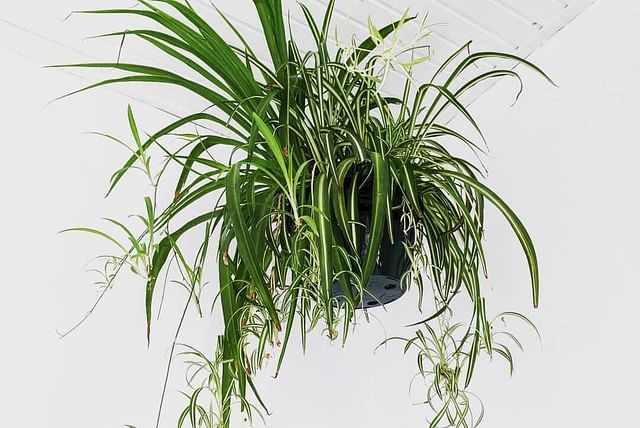
Bottom watering is especially good for plants that love moisture. It helps their roots to take in moisture slowly while preventing overwatering. Let's look at a few plants that thrive best when watered from below:
Peace Lily
Peace lilies love bottom watering because it helps keep their roots moist while avoiding waterlogged soil. These plants love humidity and can often show signs of stress, like wilting, if they dry out too much. By allowing them to soak up water from the bottom, you can keep them happy and healthy!
Spider Plant
Spider plants are very adaptable plants and thrive with bottom watering. Their roots appreciate the consistent moisture, which promotes lush green leaves and healthy growth.
Pothos
Pothos plants are known to be tough and they love the bottom watering method. This method helps keep their soil evenly moist without the risk of overwatering and helps to keep its long vines well-hydrated.
Calathea
Calatheas are crave of humidity and moisture, making bottom watering an ideal choice. By allowing the soil to soak up water gradually, you can keep their sensitive leaves vibrant and healthy. Bottom watering helps to reduce the chance of leaf curl or browning, giving you those stunning patterns for which they're famous.
Ferns
Many ferns, like the Boston fern, prefer bottom watering to maintain consistent moisture in their soil. These plants thrive in humid environments and do best when they can soak up water from below. This technique helps mimic their natural habitat, keeping their delicate fronds lush and vibrant.
Best plants for top watering
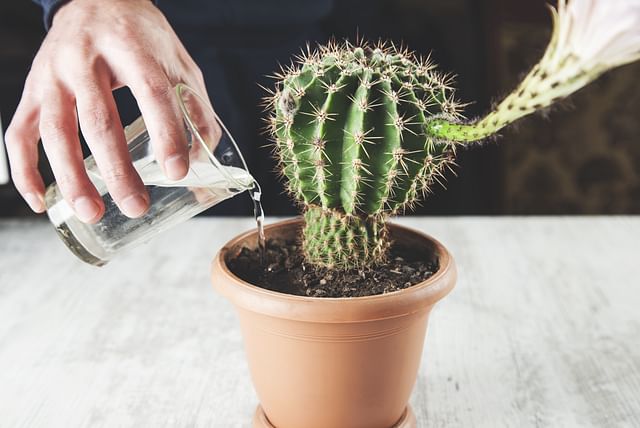
But not all plants like bottom watering as much as they do top watering. Top watering is effective for plants that like to dry out a bit between waterings or those that are sensitive to soggy soil. Let's take a closer look at some plants that grow best when you use the top watering technique for them.
Succulents
Succulents, with their thick, fleshy leaves, are experts at storing water, so they prefer top watering. This method allows the soil to dry out between waterings. Make sure to water thoroughly until it drains out the bottom, but give them plenty of time to dry out afterward!
Cacti
Similar to succulents, cacti are adapted to very dry environments and thrive with top watering. They need the soil to dry out completely before the next watering session. By providing water from the top, you help encourage deep root growth while maintaining the dry conditions they love.
African Violets
African violets are sensitive to overwatering and prefer a gentle top watering approach. By watering from the top, you can control how much water your plant gets, so they're hydrated but not overwatered.
Conclusion
In this plant care guide we've learned what the difference between top-watering and bottom watering is. We've also learned the advantages and disadvantages of bottom watering your plants.
Bottom watering is great if you're using the right soil for your plant and you want to help prevent pests on or around your plant. However, you shouldn't only water your plants from the bottom, because you still need to drain away the salts left behind by your fertilizer.
When you combine top watering and bottom watering to water your plant, you keep your plant's growing environment clean and well-hydrated. This helps you to give your plant the growing environment it needs to thrive and grow big and strong!
Thank you for reading this post! I hope it helps you to keep your plants healthy and beautiful! If you're looking for more guides on specific plants, you can always request a plant guide to get a guide for the plant you have trouble with.
Test your plant care knowledge
Quiz completed!
Want to learn more? Sign up for my newsletter to receive free tips in your inbox!
Sign up now!